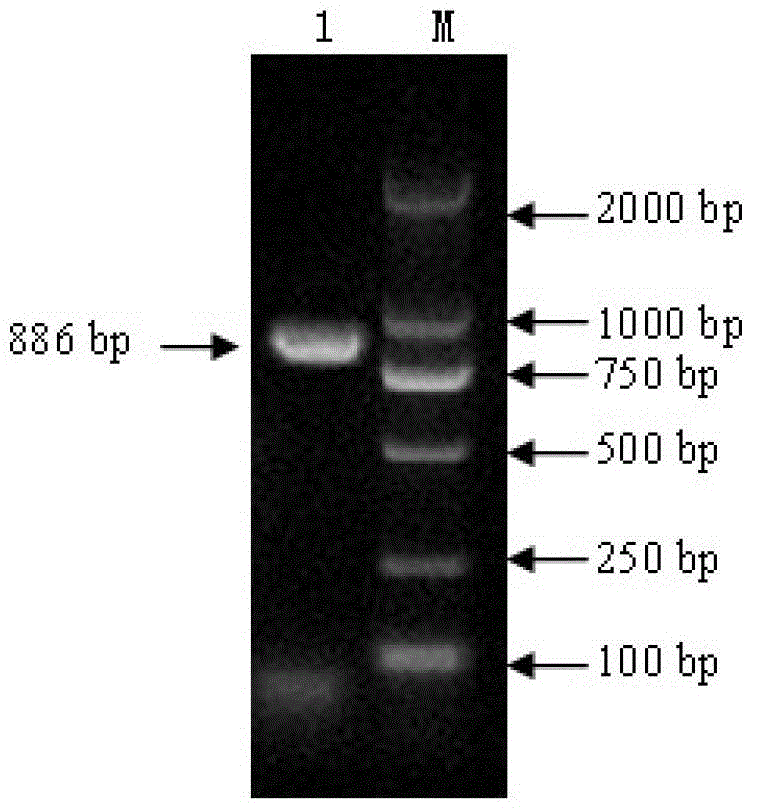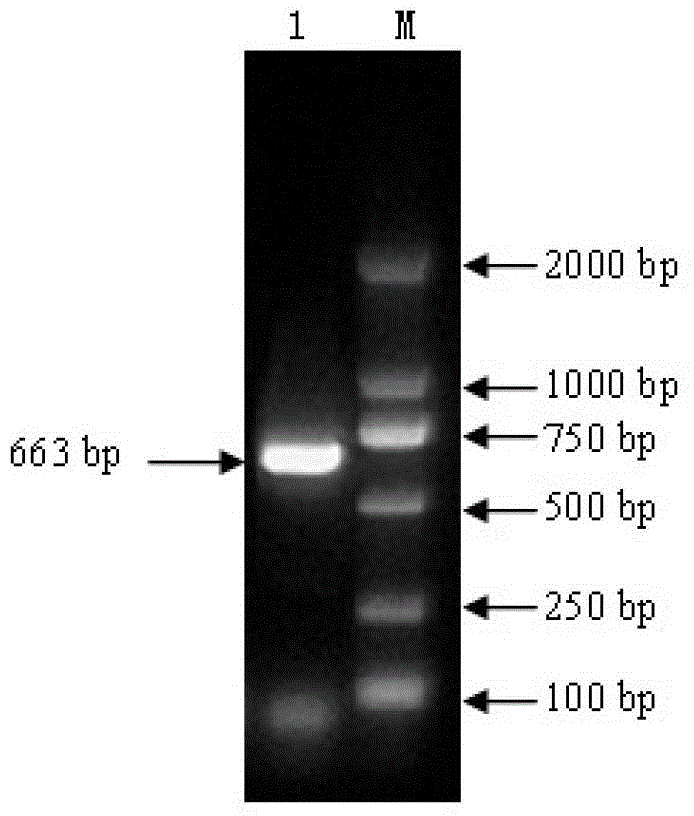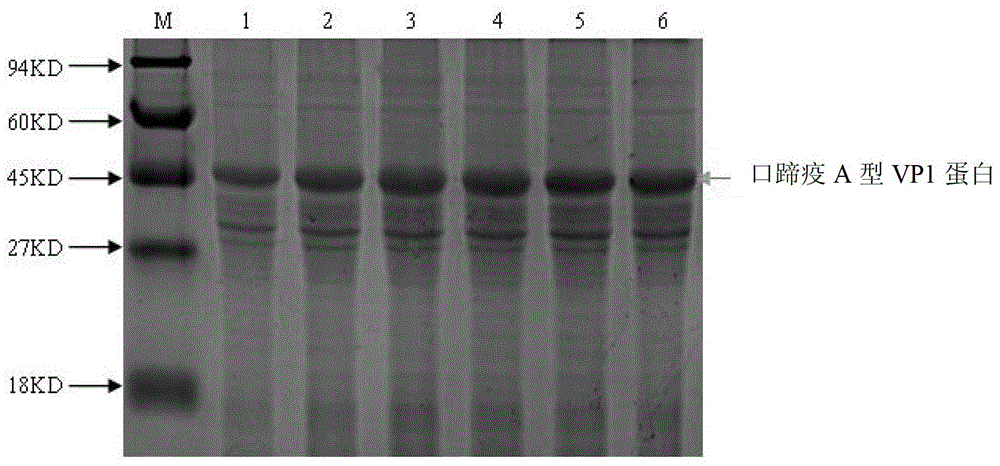Competitive ELISA method based on foot-and-mouth disease A type VP1 protein and its monoclonal antibody
A technology of FMDV-A-VP1 and foot-and-mouth disease, which is applied in the field of animal immunology detection, can solve the problems of high detection cost, troublesome detection operation, large error of results, etc., and achieve the effect of good stability, strong specificity and high efficiency
- Summary
- Abstract
- Description
- Claims
- Application Information
AI Technical Summary
Problems solved by technology
Method used
Image
Examples
Embodiment 1
[0042] Obtaining of embodiment 1 foot-and-mouth disease type A VP1 protein
[0043] (1) Primer design
[0044] According to the gene sequence of foot-and-mouth disease virus type A published in GenBank, design a pair of cloning primers (C1, C2) to amplify the sequence containing FMDV-A-VP1 gene, the size is 886bp; design a pair of primers for prokaryotic expression vector and target gene sequence The complete VP1 gene (639bp) is specifically expressed with primers (E1, E2) and inserted into EcoRI and XholⅠ restriction sites. The primer sequences were sent to Dalian Bao Biological Engineering Co., Ltd. for synthesis.
[0045] Table 1 amplifies the primer nucleotide sequence of FMDV-A-VP1 gene
[0046]
[0048] Using the gene DNA of foot-and-mouth disease type A virus as a template, use the first pair of cloning primers C1 and C2 to amplify the sequence (886bp) containing the FMDV-A-VP1 gene, and then use the second pair of expression primers E1 a...
Embodiment 2
[0053] The acquisition of embodiment 2 foot-and-mouth disease type A VP1 protein monoclonal antibody
[0054] Step a) Animal immunization: immunize 7-week-old BALB / c female mice with the foot-and-mouth disease A-type VP1 protein 1 induced by the expression plasmid PET-32a-VP1. 1:12800 in mice.
[0055] Step b) cell fusion: get the splenocytes of the immunized mice obtained in step a), carry out cell fusion with myeloma cell SP2 / 0, and use the foot-and-mouth disease A-type VP1 protein 2 induced by the expression plasmid pGEX-6p-1-VP1 as The antigen was coated, and the fused cells were screened by indirect ELISA to obtain hybridoma cells.
[0056] Step c) A large number of cloning of monoclonal antibodies: inject the hybridoma cells obtained in step b) into the peritoneal cavity of mice, feed the injected mice for 1 week, collect ascites from mice with enlarged abdomen, and purify the ascites to obtain foot-and-mouth disease A Type VP1 protein monoclonal antibody.
[0057] Fo...
Embodiment 3
[0058] The competitive ELISA detection method of embodiment 3 porcine foot-and-mouth disease type A serum
[0059] Take the sera of 6 pigs suspected of being infected with FMD type A, and determine whether the sera are negative or positive. Value, data processing, in the competition ELISA detection method:
[0060] Step 1) Sample dilution: the serum sample was diluted to 4 times the original volume to obtain the serum sample to be tested.
[0061] Step 2) Antigen coating: the coating antigen used was FMD A-type VP1 protein 2 induced by the expression plasmid pGEX-6p-1-VP1, and the coating concentration of the coating antigen was 0.625ug / mL.
[0062] Step 3) Blocking: Block the antigen coated in step 2) with 1% BSA solution blocking solution for 40 minutes to obtain a blocked ELISA plate.
[0063] Step 4) Adding sample and adding monoclonal antibody: add the serum sample to be tested obtained in step 1) to the blocked microtiter plate obtained in step 3) to bind the serum ant...
PUM
| Property | Measurement | Unit |
|---|---|---|
| absorbance | aaaaa | aaaaa |
Abstract
Description
Claims
Application Information
 Login to View More
Login to View More - R&D Engineer
- R&D Manager
- IP Professional
- Industry Leading Data Capabilities
- Powerful AI technology
- Patent DNA Extraction
Browse by: Latest US Patents, China's latest patents, Technical Efficacy Thesaurus, Application Domain, Technology Topic, Popular Technical Reports.
© 2024 PatSnap. All rights reserved.Legal|Privacy policy|Modern Slavery Act Transparency Statement|Sitemap|About US| Contact US: help@patsnap.com










